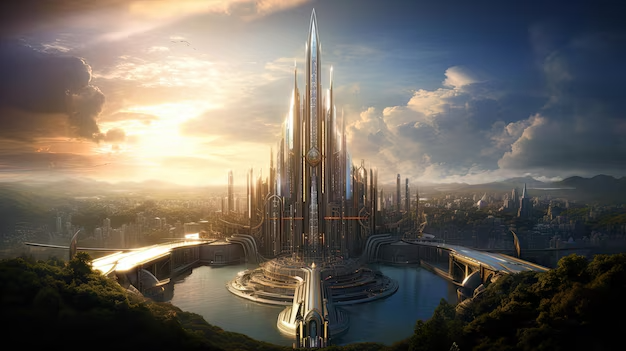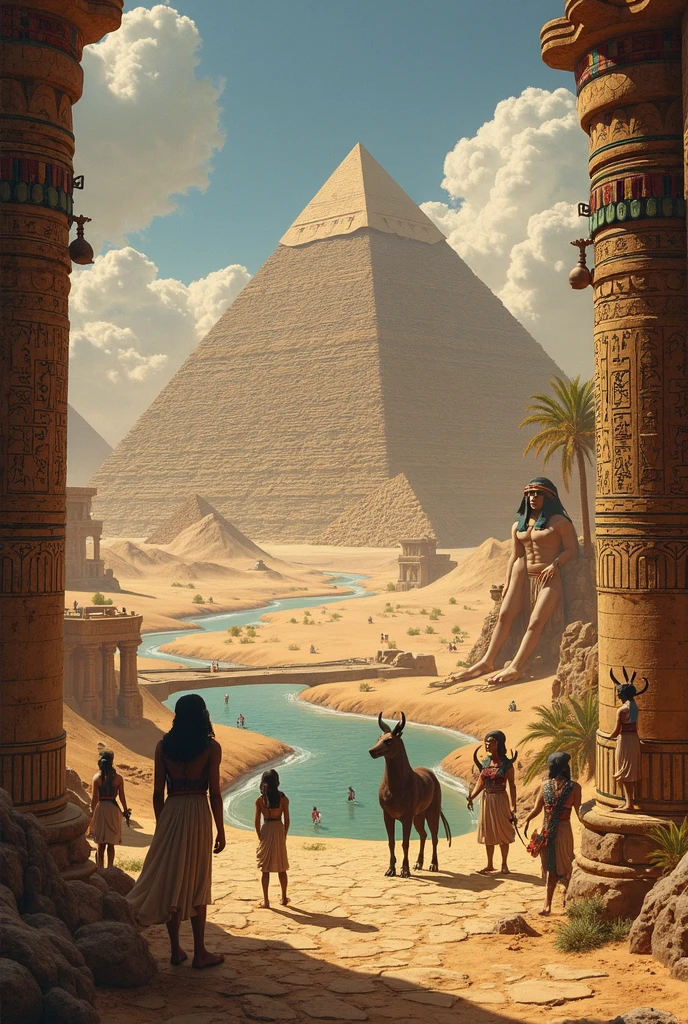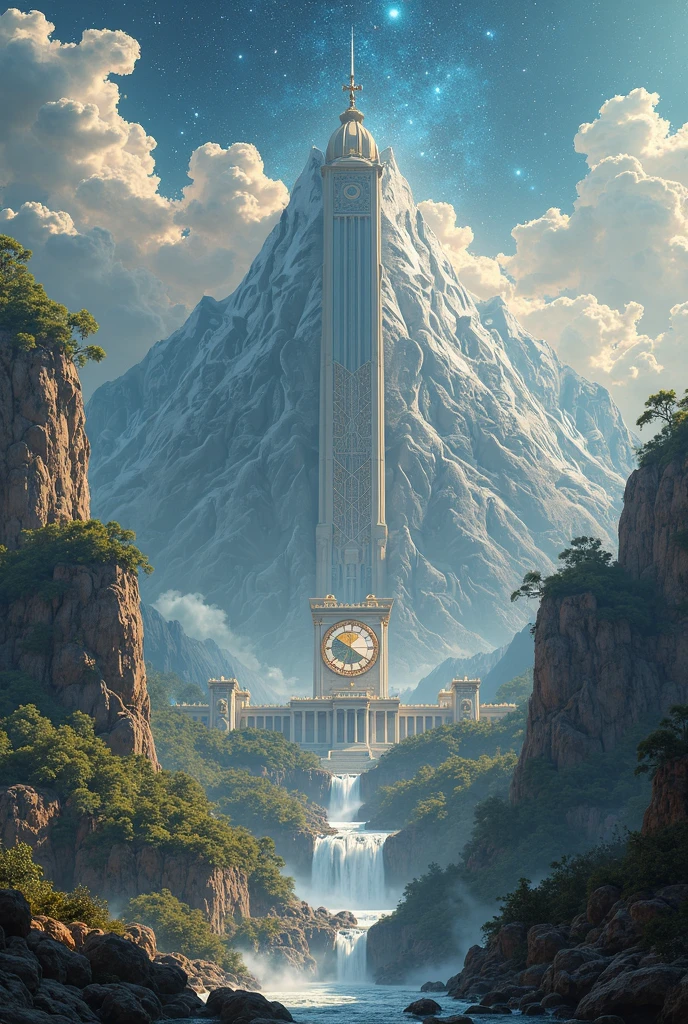Germanic Mythology: The Legends of Wotan and the Norse Pantheon
The rich tapestry of Germanic mythology is filled with powerful gods, fearsome beasts, and epic tales of heroism and betrayal. At the center of these myths stands Wotan, the Allfather, a deity of wisdom, war, and poetry. Alongside him are figures like Donar (Thor), the thunder god, and the trickster Loki, whose actions shape the fate of the cosmos. This article explores the fascinating world of Germanic mythology, from the Valkyries who choose the slain to the realm of Midgard, home of humanity.
The Pantheon of Germanic Gods
The gods of Germanic mythology are divided into two main groups: the Aesir and the Vanir. The Aesir, including Wotan and Donar, are associated with war and governance, while the Vanir are linked to fertility and nature. Below is a table highlighting key deities:
| Deity | Role | Symbol |
|---|---|---|
| Wotan (Odin) | God of wisdom, war, and poetry | Ravens (Huginn and Muninn), spear (Gungnir) |
| Donar (Thor) | God of thunder and protection | Hammer (Mjölnir), chariot pulled by goats |
| Loki | Trickster god, shapeshifter | Serpent, fire |
| Freyja | Goddess of love, fertility, and war | Necklace (Brisingamen), chariot pulled by cats |
Wotan: The Allfather
Wotan, also known as Odin, is one of the most complex figures in Germanic mythology. He is the ruler of Asgard and seeks knowledge relentlessly, even sacrificing an eye to drink from the Well of Wisdom. His hall, Valhalla, is where fallen warriors are taken by the Valkyries to prepare for Ragnarök, the end of the world.
Wotan’s Companions and Symbols
- Ravens: Huginn (Thought) and Muninn (Memory) bring him news from across the Nine Realms.
- Wolves: Geri and Freki accompany him in battle.
- Sleipnir: His eight-legged horse, born from Loki’s trickery.
Donar: The Thunder God
Donar, known as Thor in Norse mythology, is the protector of Midgard (the human world) and the enemy of giants. His mighty hammer, Mjölnir, is one of the most iconic weapons in mythology. Unlike Wotan, who relies on cunning, Donar embodies brute strength and courage.
Donar’s Battles and Legacy
Some of the most famous myths involving Donar include:
- His fishing trip where he nearly catches the World Serpent, Jörmungandr.
- His duel with the giant Hrungnir, whom he defeats despite being outmatched in size.
- His role in Ragnarök, where he slays Jörmungandr but succumbs to its venom.
Loki: The Trickster God
Loki is one of the most unpredictable figures in Germanic mythology. Though he often aids the gods with his cleverness, his schemes frequently lead to chaos. He is the father of monstrous beasts like Fenrir the wolf and Jörmungandr the serpent, who play key roles in Ragnarök.
Loki’s Most Notorious Deeds
- Causing the death of Baldr, the beloved god of light.
- Transforming into a mare to distract a giant’s horse, later giving birth to Sleipnir.
- Leading the forces of chaos during Ragnarök.
The Valkyries: Choosers of the Slain
The Valkyries are warrior maidens who serve Wotan by selecting the bravest fallen warriors to join him in Valhalla. They are often depicted as fierce and beautiful, riding winged horses across battlefields.
Famous Valkyries
- Brynhildr – A central figure in the Völsunga saga.
- Sigrún – Appears in the Poetic Edda as a vengeful spirit.
- Hildr – Associated with eternal battle in some legends.
Midgard and the Nine Realms
Midgard, the realm of humans, is just one of the Nine Worlds in Germanic cosmology. It is protected by Donar and connected to Asgard by the Bifröst, a rainbow bridge. Below is a brief overview of the realms:
| Realm | Inhabitants |
|---|---|
| Asgard | Aesir gods, including Wotan and Donar |
| Midgard | Humans |
| Jotunheim | Giants, enemies of the gods |
| Helheim | Realm of the dead, ruled by Hel (Loki’s daughter) |
Mythical Beasts in Germanic Lore
Germanic mythology is filled with terrifying and awe-inspiring beasts, many of which are tied to the gods. Some of the most notable include:
- Fenrir: The monstrous wolf destined to kill Wotan during Ragnarök.
- Jörmungandr: The World Serpent, arch-nemesis of Donar.
- Nidhogg: A dragon that gnaws at the roots of Yggdrasil, the World Tree.
For further reading on Germanic mythology, check out these resources: Norse Mythology for Smart People, Britannica’s Article on Odin, and World History on Thor.
Explore more fascinating articles on mythology and follow us for updates on facebook.com/zatiandrops.
The Role of Fate and Prophecy in Germanic Mythology
One of the most striking aspects of Germanic mythology is its emphasis on fate and inevitability. The concept of Wyrd, an Old English term meaning destiny or fate, permeates the myths. The gods themselves are bound by prophecies, particularly the foretold doom of Ragnarök, where even Wotan cannot escape his destined battle with the wolf Fenrir.
The Norns: Weavers of Fate
Unlike the Greek Moirai, the Norns are three powerful female beings who control the destiny of gods and mortals alike. They reside at the base of Yggdrasil, the World Tree, and carve runes into its trunk to shape the future. Their names are:
- Urd (Past)
- Verdandi (Present)
- Skuld (Future)
Their influence is so vast that even Wotan consults them, though he cannot alter their decrees. This fatalistic worldview underscores the tension between free will and predestination in Germanic lore.
The Creation Myth: From Ymir’s Body to the Nine Realms
The origins of the cosmos in Germanic mythology are both brutal and poetic. According to the Prose Edda, the universe began in the void of Ginnungagap, where fire and ice collided to form the first being, Ymir, a primeval giant. His body became the foundation of the world:
| Body Part | What It Became |
|---|---|
| Flesh | The earth (Midgard) |
| Blood | Oceans and rivers |
| Bones | Mountains |
| Skull | The sky, held up by four dwarves |
The gods Wotan, Vili, and Vé slew Ymir and fashioned the world from his remains, establishing order amid chaos. This act of creation mirrors the cyclical nature of destruction and rebirth seen in Ragnarök.
The Cult of the Gods: Rituals and Worship
Historical evidence suggests that Germanic tribes practiced elaborate rituals to honor their deities. Sacred groves, known as hörgr, served as open-air temples where offerings were made. Key practices included:
- Blót: Sacrificial feasts where animals (and occasionally humans) were offered to the gods.
- Seiðr: A form of shamanistic magic associated with Wotan and the Vanir goddess Freyja.
- Rune Casting: Divination using carved symbols, believed to channel divine wisdom.
Archaeological finds, such as the Oseberg ship burial, reveal the importance of these rituals in daily life. Items like Thor’s hammer amulets were worn for protection, emphasizing the gods’ role as guardians.
The Legend of Sigurd and the Dragon Fafnir
Heroic sagas are a cornerstone of Germanic mythology, and none is more famous than the tale of Sigurd (Siegfried in Germanic tradition). His slaying of the dragon Fafnir echoes themes of greed, betrayal, and cursed treasure. Key moments in the legend include:
- Sigurd’s tutelage under the smith Regin, who urges him to kill Fafnir.
- The discovery of the ring Andvaranaut, which brings misfortune to its owner.
- Sigurd roasting Fafnir’s heart, gaining the ability to understand birds—a twist that saves him from Regin’s treachery.
This story later influenced Tolkien’s The Hobbit, particularly the character of Smaug and the One Ring’s corrupting power.
The Vanir: Fertility Deities and Their Conflict with the Aesir
While the Aesir dominate many myths, the Vanir represent an older, nature-oriented pantheon. Their war with the Aesir, known as the Aesir-Vanir War, ended in a truce and exchange of hostages, including the wise Njörd and his children, Freyja and Freyr. The Vanir’s domains include:
- Freyja: Love, beauty, and seiðr magic.
- Freyr: Fertility, prosperity, and sunlight.
- Njörd: Sea, wind, and wealth.
Their integration into Asgard highlights the blending of warrior and agrarian cultures in Germanic society.
The Afterlife: Beyond Valhalla
Though Valhalla is the most famous afterlife realm, Germanic mythology describes multiple destinations for the dead:
| Realm | Who Goes There? |
|---|---|
| Valhalla | Warriors chosen by the Valkyries |
| Fólkvangr | Half of the slain, claimed by Freyja |
| Helheim | Those who die of illness or old age |
This multiplicity reflects the diverse values of Germanic culture, where honor in battle coexisted with reverence for natural cycles.
The Legacy of Germanic Mythology in Modern Culture
From Wagner’s Ring Cycle to Marvel’s Thor, Germanic myths continue to inspire. The days of the week in English and German still bear the names of these ancient gods:
- Tuesday: Tyr’s day (god of war).
- Wednesday: Wotan’s day (Wotan’s influence).
- Thursday: Donar’s day (Donar’s enduring legacy).
Scholarship on these myths has also deepened, with resources like The Poetic Edda, The Prose Edda, and academic studies offering new insights.
Explore more fascinating articles on mythology and follow us for updates on facebook.com/zatiandrops.
The Influence of Germanic Mythology on Language and Literature
The impact of Germanic mythology extends far beyond ancient sagas—it has shaped the very fabric of European languages and storytelling traditions. Old Norse and Old English poetry, such as Beowulf and the Elder Edda, are steeped in mythological references. Kennings, a type of metaphorical compound phrase (e.g., “whale-road” for the sea), frequently drew from these legends.
Key Literary Works Inspired by Germanic Myths
- Beowulf: This Old English epic features monsters like Grendel, whose lineage traces back to Jotunheim’s giants.
- The Nibelungenlied: A Germanic epic reworking Sigurd’s tale, blending history with myth.
- Snorri Sturluson’s Prose Edda: A 13th-century compilation preserving Norse myths for posterity.
The Symbolism of Yggdrasil: The World Tree
At the heart of Germanic cosmology stands Yggdrasil, an immense ash tree connecting the Nine Realms. Its branches stretch into the heavens, while its roots delve into mystical wells, including:
| Root | Location | Significance |
|---|---|---|
| First | Asgard | Guarded by the Norns at Urd’s Well |
| Second | Jotunheim | Home to Mimir’s Well of Wisdom |
| Third | Niflheim | Tapped by Nidhogg, the corrupting dragon |
Yggdrasil’s decay during Ragnarök symbolizes the fragility of cosmic order, yet its survival hints at renewal.
Lesser-Known Deities and Their Roles
Beyond the major gods, Germanic mythology features a host of intriguing minor figures:
- Heimdall: The watchman of Asgard, destined to sound the Gjallarhorn at Ragnarök.
- Tyr: The one-handed god of justice, who sacrificed his hand to bind Fenrir.
- Idunn: Keeper of the golden apples that grant the gods eternal youth.
The Dwarves: Master Craftsmen of Myth
Forged from the maggots in Ymir’s flesh, dwarves like Brokkr and Sindri created legendary artifacts, including:
- Mjölnir (Donar’s hammer)
- Gungnir (Wotan’s spear)
- Draupnir (a self-replicating gold ring)
Ragnarök: The Twilight of the Gods
The apocalyptic battle of Ragnarök is foretold in grim detail: the sun darkens, Fenrir breaks free, and gods and monsters clash in a final, fatal struggle. Yet, the myths also speak of rebirth—Lif and Lifthrasir, two humans sheltered in Yggdrasil’s wood, repopulate the earth.
Key Events of Ragnarök
- The death of Wotan and Fenrir.
- Donar and Jörmungandr’s mutual annihilation.
- The burning of Yggdrasil and submersion of the world in water.
Archaeological Evidence of Germanic Worship
Artifacts like the Gundestrup Cauldron and the Thorsberg chape reveal how deeply these myths permeated daily life. Rune stones, such as the Rök Stone, often reference mythological events, blending history and legend.
Notable Finds
| Artifact | Mythological Connection |
|---|---|
| Oseberg Ship | Carved with scenes of Valkyries and serpents |
| Lindby Man | A bog body possibly sacrificed to Wotan |
For deeper exploration, consult Archaeology Magazine, Expedition Magazine, or The British Museum’s Viking Collection.
Explore more fascinating articles on mythology and follow us for updates on facebook.com/zatiandrops.
The Role of Women in Germanic Mythology
While often overshadowed by male deities like Wotan and Donar, female figures played crucial roles in Germanic mythology. From goddesses to giantesses, these women shaped the fate of gods and mortals alike. Their stories reveal a complex interplay of power, wisdom, and magic.
Powerful Goddesses and Their Domains
| Goddess | Role | Notable Traits |
|---|---|---|
| Frigg | Wotan’s wife, goddess of marriage | Knew all fates but never spoke them |
| Skadi | Goddess of winter and hunting | Married Njörd but preferred mountains to sea |
| Eir | Goddess of healing | Attended Baldr’s death |
The Concept of Wyrd in Daily Life
The Germanic understanding of Wyrd (fate) wasn’t limited to grand myths – it influenced everyday decisions. People believed:
- Names held power (thus the tradition of naming weapons like Gram and Gungnir)
- Dreams could be omens (as in Wotan‘s prophetic dreams)
- Runes weren’t just letters but magical symbols
Practical Applications of Wyrd
Archaeological evidence shows how deeply these beliefs ran:
- Amulets with runic inscriptions for protection
- Burial goods chosen based on afterlife beliefs
- Legal oaths sworn on sacred rings in temples
The Germanic Calendar and Sacred Times
The ancient Germanic year was marked by festivals tied to mythological events:
| Festival | Time | Mythological Connection |
|---|---|---|
| Yule | Winter Solstice | Honored Donar‘s battle against winter giants |
| Sigrblót | Spring | Sacrifice to Wotan for victory |
| Midsummer | Summer Solstice | Celebrated Baldr’s temporary return from Hel |
The Evolution of Germanic Myths
As Germanic tribes migrated and encountered other cultures, their mythology adapted:
- Roman influence added new dimensions to war gods
- Christianization transformed Wotan into a folkloric figure
- Regional variations created distinct versions of major myths
Surviving Pagan Elements in Christianity
Many pagan traditions persisted:
- Christmas trees (echoing Yggdrasil)
- Easter eggs (originally symbols of Freyja)
- Thursday thunderstorms still called “Thor’s anger” in some dialects
For more on these cultural blends, see History of Christmas Traditions, Easter’s Pagan Roots, and Viking Christmas Influences.
Explore more fascinating articles on mythology and follow us for updates on facebook.com/zatiandrops.


